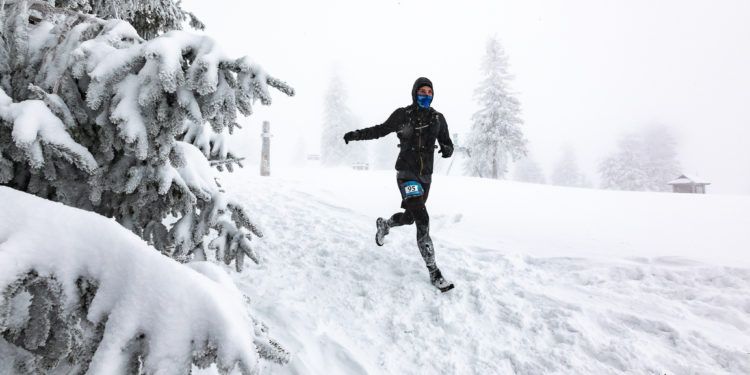Test: The North Face ThermoBall™ Eco Jacket
We’ve mentioned it before, and recently had a chance to test it. Eco – the innovative version of the well-known ThermoBall™ jacket was made from 100% recycled materials. How this solution works in practice?
Technologies and materials used
Everything – from the outer material, to the lining and print, to the insulation, has been made with an eye toward reducing the amount of waste that ends up in landfills each day and reducing the use of raw materials. Thus, the tested classic version (a matte version is also available) is sewn from lightweight, 100% recycled 20D 38 G/M² Nylon with a durable water repellent (DWR) finish. Durable Water Repellent, which is a water-repellent finish on the fabric that resists water molecules while protecting against rapid soaking). The jacket’s full-length fill is ThermoBall™ Eco synthetic insulation (100% recycled polyester), a much more moisture-resistant alternative to natural down. Additional advantages are: quilted construction, thanks to which the insulating material is distributed evenly, and YKK zipper with VISLON® Aquaguard technology – use of laminated polyurethane tape, increasing the zipper’s water resistance.
 The North Face jacket test: ThermoBall™ Eco (pic. outdoormagazine.pl)
The North Face jacket test: ThermoBall™ Eco (pic. outdoormagazine.pl)
Already at the first inspection of the jacket, right after unpacking, it was possible to notice numerous protruding threads in the areas of the hems on the inner and outer sides. Rather, it mainly affects the visual qualities of the jacket, although it’s better to watch out for bigger snags.
Comfort, meaning fit and practical details
Similar to other The North Face models, the jacket has a post cut and rather wide shoulders. Despite the fact that I usually reach for size M (at 178 cm tall), the photos show a jacket with a slightly smaller size – S. Although I had my doubts at first, the “S” turned out to be a very good replacement for other jackets that protect from the cold and wind. Due to the fact that it fits quite snugly at waist level in this size, I don’t wear a thick sweatshirt under it, only thin clothing and/or long-sleeved thermal underwear. This, however, is definitely enough for the transitional season, i.e., temperatures of 5-10°C and quieter activity – for fast walking with a backpack it got too warm in it.
For such a minimalist design, a plus certainly are the details, which were not lacking – simple, but significantly improving comfort. It’s elastic piping at the wrists, glove closures and a patch to protect the chin. Drawstrings at the bottom, allowing you to adjust the circumference around the hips,
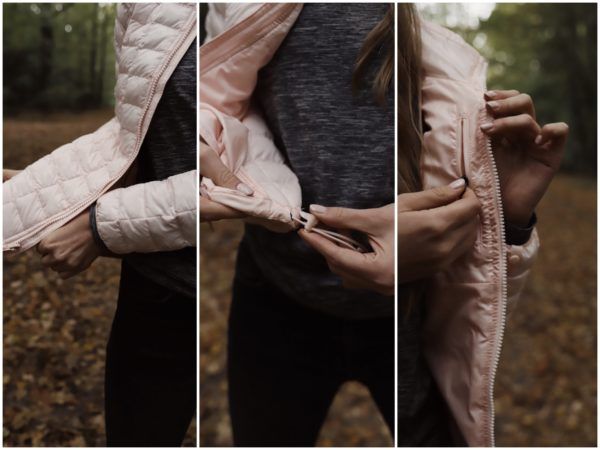 The North Face jacket test: ThermoBall™ Eco (photo. outdoormagazine.pl)
The North Face jacket test: ThermoBall™ Eco (photo. outdoormagazine.pl) 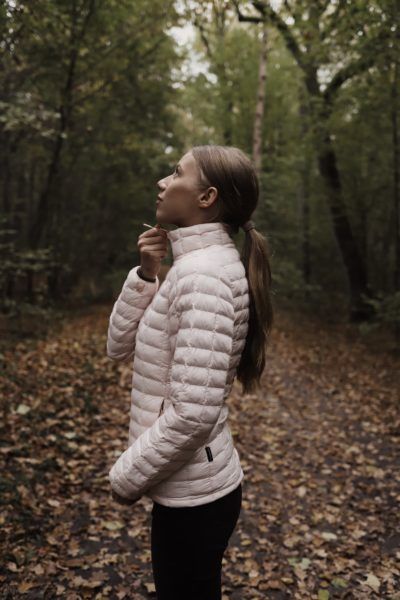 The North Face jacket test: ThermoBall™ Eco (fot. outdoormagazine.pl)
The North Face jacket test: ThermoBall™ Eco (fot. outdoormagazine.pl) 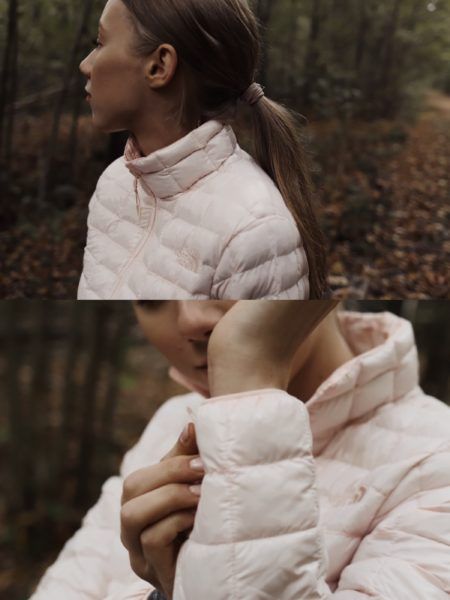 Test of The North Face jacket: ThermoBall™ Eco (fot. outdoormagazine.pl)
Test of The North Face jacket: ThermoBall™ Eco (fot. outdoormagazine.pl)
The “pocket” version
Literally. And we’re not talking about pockets, of which there are three in total (an extra one on the inside), but one into which we can roll up and stow the entire jacket. Thanks to its compact dimensions, the jacket does not take up too much space in the backpack during hiking and biking trips, where it serves as an insulating layer, so it often remains unpacked for a long time. And although it features good resilience (even after getting wet and drying), I wouldn’t keep it compressed in my pocket for too long.
The average weight of this model is 430 g.
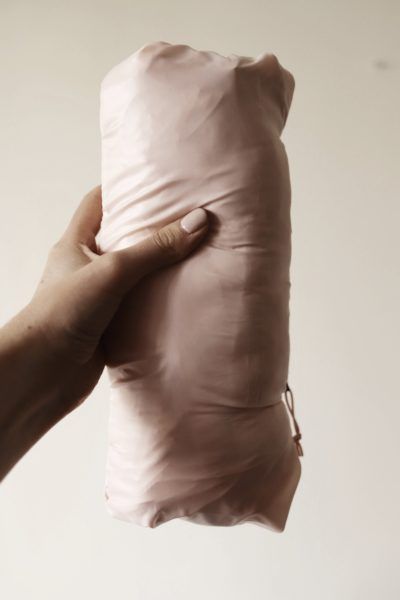 The North Face jacket test: ThermoBall™ Eco (pic. outdoormagazine.pl)
The North Face jacket test: ThermoBall™ Eco (pic. outdoormagazine.pl)
For the forest and the city
The North Face ThermoBall™ Eco jacket is not the company’s first model, whose design will work as well out of town as it does in the city. Personally, I have a pearl shade close to light pink (according to the manufacturer – Pearl Blush), but there are many more colors to choose from, matching (here I will leave the technical aspects) to sporty and those slightly more everyday styles.
 The North Face jacket test: ThermoBall™ Eco (photo. outdoormagazine.en)
The North Face jacket test: ThermoBall™ Eco (photo. outdoormagazine.en) 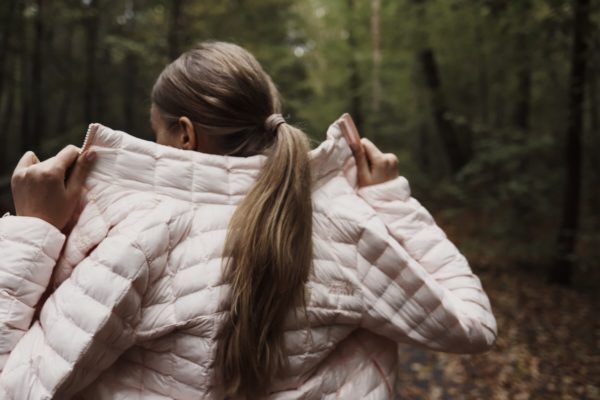 The North Face jacket test: ThermoBall™ Eco (pic. outdoormagazine.pl)
The North Face jacket test: ThermoBall™ Eco (pic. outdoormagazine.pl)


